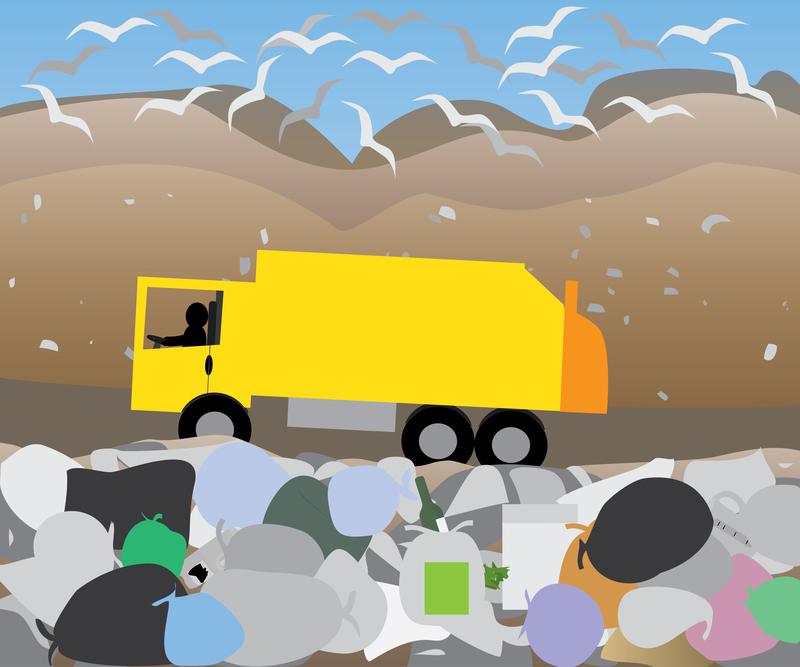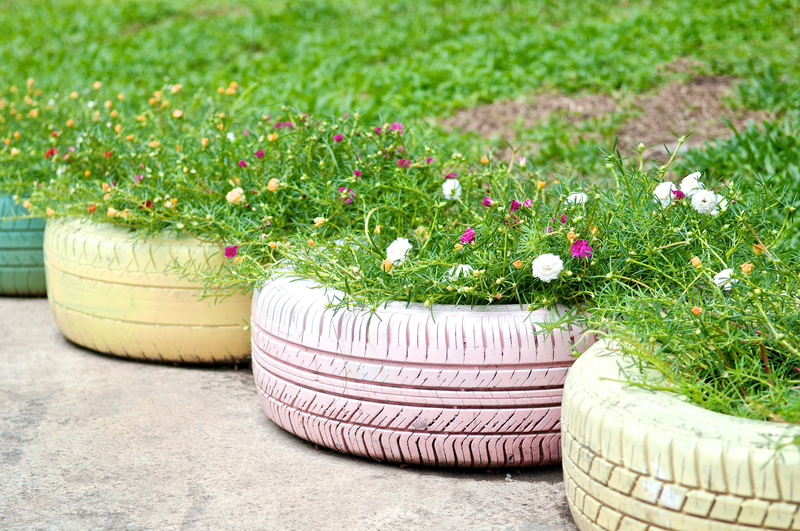Ways to Control Yard Waste Growth
Posted on 14/03/2025
Yard waste growth can quickly get out of hand, posing both an environmental and logistical problem for homeowners. With proper management practices, it is possible to keep yard waste under control and maintain a well-manicured, healthy outdoor space. This article explores effective ways to control yard waste and ensure that your lawn and garden remain pristine and well-kept.
Understanding Yard Waste
Before diving into methods to control yard waste, it's essential to understand what it encompasses. Yard waste typically includes grass clippings, leaves, branches, and other organic materials generated from routine lawn and garden maintenance. These materials are biodegradable but can accumulate rapidly, especially during peak growth seasons.

Regular Mowing and Pruning
One of the most straightforward methods to control yard waste growth is regular mowing and pruning. Mowing your lawn frequently ensures that grass clippings are shorter and easier to manage. Pruning shrubs and trees on a routine basis prevents large quantities of branches and leaves from falling at once.
Best Practices for Mowing
- Mow frequently: Aim to mow your lawn weekly during peak growing seasons. This minimizes the amount of grass, reducing the volume of clippings to handle.
- Use a mulching mower: Mulching mowers chop grass clippings finely and return them to the lawn. This technique not only reduces waste but also provides natural fertilization.
- Avoid cutting too short: Cutting grass too short can damage the turf and increase yard waste production because of the need for more frequent mowing.
Effective Pruning Techniques
- Selective pruning: Remove only dead or overgrown branches to ensure healthy plant growth and minimize waste.
- Annual trimming: Prune shrubs and trees during the dormant season, typically late winter or early spring, to control their size and promote new growth efficiently.
- Dispose responsibly: Use trimmed branches as mulch or compost if possible; otherwise, utilize yard waste collection services.
Composting Yard Waste
Composting is a sustainable way to manage yard waste by turning organic material into nutrient-rich compost for your garden. It reduces waste sent to landfills and creates a valuable resource for improving soil health.
Setting Up a Compost System
- Choose a compost bin: Select a compost bin that suits your yard size and waste volume. Tumbling composters can speed up the process, while stationary bins are suitable for larger amounts of waste.
- Balance materials: Combine green waste (e.g., grass clippings, kitchen scraps) with brown waste (e.g., leaves, small branches) to maintain a balanced carbon-to-nitrogen ratio.
- Aeration and moisture: Turn the compost regularly to aerate it and keep it moist (but not waterlogged) to promote decomposition.
Mulching for Waste Reduction
Mulching is another practical method of yard waste management. It involves using organic material like leaves, grass clippings, and bark to cover soil surfaces.
Benefits of Mulching
- Reduces waste: Mulching utilizes yard waste productively, lowering the overall volume needing disposal.
- Improves soil health: Organic mulch breaks down over time, enriching the soil with nutrients.
- Moisture retention: Mulched areas retain soil moisture better, reducing the need for frequent watering.
Best Practices for Mulching
- Proper application: Apply mulch in layers 2-4 inches thick, avoiding direct contact with plant stems to prevent rot.
- Refresh annually: Replenish mulch layers yearly, especially around garden beds and trees, to maintain effectiveness.
- Use diverse materials: Incorporate a variety of organic materials to create a well-rounded mulch.
Grasscycling
Grasscycling refers to leaving grass clippings on the lawn after mowing instead of collecting them. This practice can significantly reduce yard waste and offer several benefits to your lawn.
Advantages of Grasscycling
- Natural fertilization: Grass clippings decompose quickly, releasing valuable nutrients back into the soil.
- Time-saving: Eliminates the need to bag and dispose of grass clippings, making lawn maintenance more efficient.
- Healthier lawn: Helps improve soil structure and moisture retention, promoting healthier grass growth.
Utilizing Yard Waste Collection Services
Many municipalities provide yard waste collection services, offering convenient ways to dispose of green waste responsibly. Utilizing these services ensures proper disposal and recycling, contributing to environmental sustainability.
How to Use Yard Waste Collection Services
- Understand local guidelines: Familiarize yourself with what materials are accepted, collection schedules, and required preparation standards (e.g., bundling branches, using biodegradable bags).
- Properly prepare waste: Follow local guidelines on container usage, weight limits, and waste preparation to ensure timely and efficient collection.
- Separate yard waste from trash: Keep yard waste separate from regular household trash to ensure it is processed correctly and recycled if possible.

Creating and Following a Yard Maintenance Schedule
Developing a yard maintenance schedule can help stay on top of yard waste production. Consistency prevents waste from piling up and ensures manageable quantities throughout the year.
Elements of an Effective Yard Maintenance Schedule
- Weekly tasks: Include regular mowing, weeding, and light pruning activities.
- Monthly tasks: Incorporate thorough inspections of trees and shrubs for any necessary pruning or pest control measures.
- Seasonal tasks: Plan for extensive activities such as planting, mulching, and winterization of the garden.
Conclusion
Controlling yard waste growth requires a combination of regular lawn and garden maintenance, sustainable practices like composting and mulching, and efficient utilization of collection services. By adopting and integrating these methods, homeowners can maintain a tidy, healthy yard while minimizing environmental impact. A strategic approach to yard care not only reduces waste but also enhances the aesthetic and functional value of your outdoor space. Consistent efforts in yard waste management lead to a more sustainable and enjoyable living environment.






